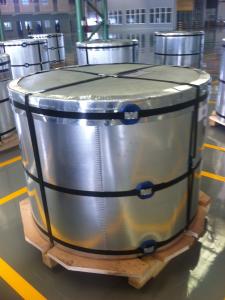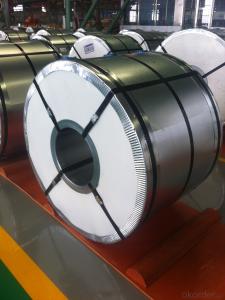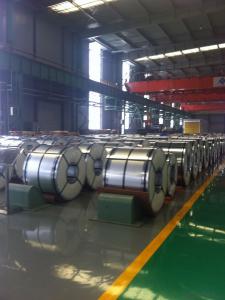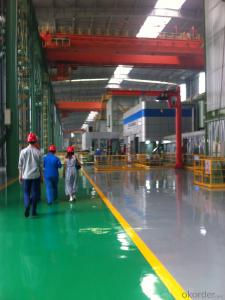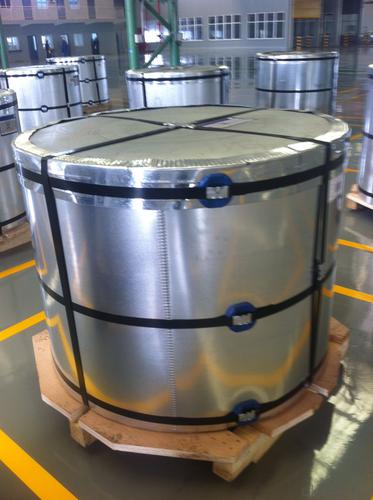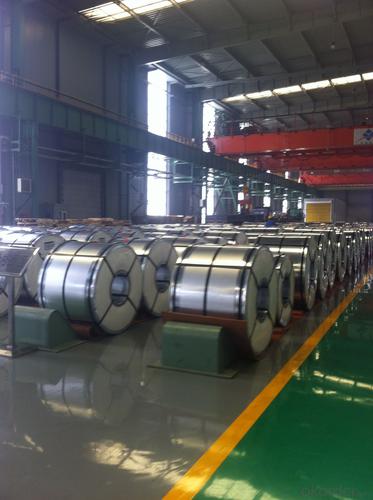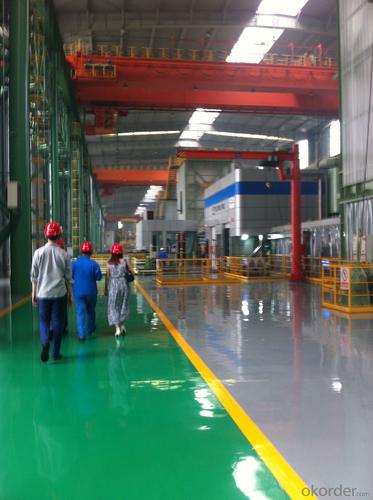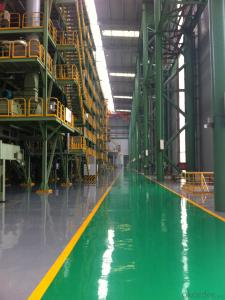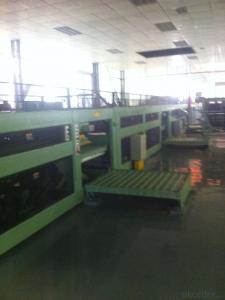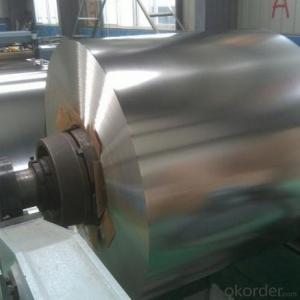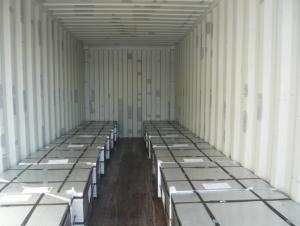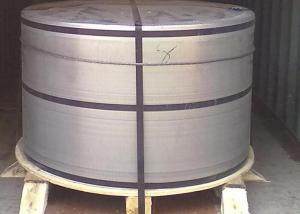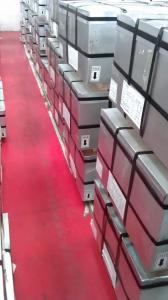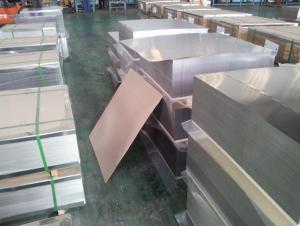Prime Quality Tinplate Sheets for 0.24mm
- Loading Port:
- Tianjin
- Payment Terms:
- TT OR LC
- Min Order Qty:
- 25 m.t.
- Supply Capability:
- 5000 m.t./month
OKorder Service Pledge
OKorder Financial Service
You Might Also Like
1.Structure Description
Electrolytic Tinplate Sheets is one of the metal packing materials, which is widely used for making painting cans ,chemical package cans , electrical cable ,battery and metal printing etc.
2. Main Features
Steady and high quality
Fast shipment
Good experience for export work
For the surface, Plate uniform in thickness,uniform and smooth tin coating, without flaws,rusts,scratch,wave,nick of tin coating etc.
Price competitive
3.Images
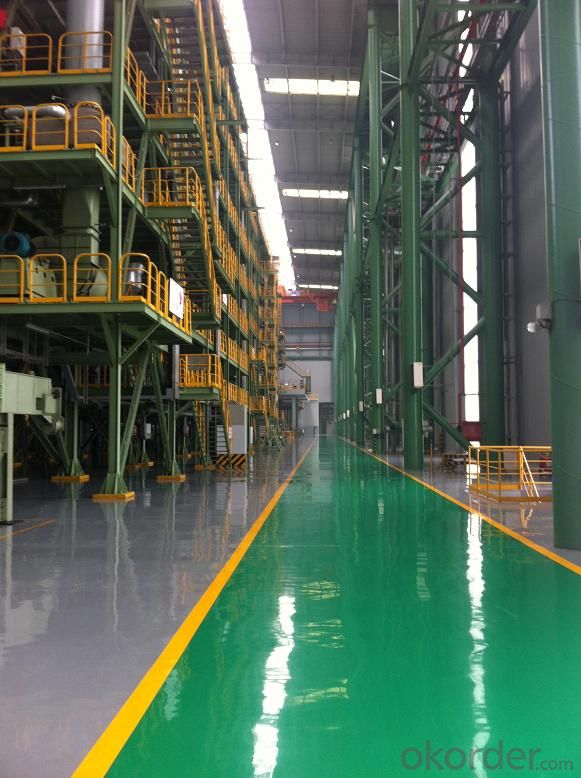
4. Specification
Standard : GB2520-2000 ,JIS G3303
Steel type : SPCC,MR
Coating : 2.8/2.8
Surface: Bright, Stone ,
Thickness:0.24
Width :600MM~1000MM
Temper : T1~T5,DR8
Package: tinplate wrapped completely with an inner cover of plastic or waterproof papers with vorners protected with metal angels.
5.FAQ
A. What is the package of tinplate? (Referred as below)
For sheets, thin plastic film + rust-proof paper + metallic cover + metallic angles+ steel band strips + fumigated wooden pallet.
For coil, thin plastic film + rust proof paper + metallic cover + steel band strips + fumigated wooden pallet
B. The surface of tinplate could you supply?
Stone finish, Bright finish, Matte finish, Silver finish
C. What quantity is the minimum order of tinplate?
Usually, the minimum quantity is 25MT. For special case, consult with us.
D. Can it make to be BA or CA for annealing?
Yes, both can do with.
- Q: What are the main suppliers of tinplate?
- The main suppliers of tinplate are major steel manufacturers, such as ArcelorMittal, Nippon Steel Corporation, Tata Steel, and JFE Steel Corporation.
- Q: How does tinplate affect the recyclability of mixed-material packaging?
- Tinplate plays a significant role in enhancing the recyclability of mixed-material packaging. It is highly recyclable and has a well-established recycling infrastructure worldwide. By incorporating tinplate into mixed-material packaging, it enables easier separation of different materials during the recycling process. Tinplate's recyclability helps reduce waste and conserve resources by enabling the recovery and reuse of valuable materials, ultimately promoting a more sustainable packaging system.
- Q: How does tinplate affect the overall product visibility?
- Tinplate can significantly enhance the overall product visibility due to its shiny and reflective surface. It adds a premium and attractive appearance to the product packaging, catching the attention of consumers. Additionally, tinplate allows for high-quality printing, enabling detailed and vibrant graphics that further enhance product visibility on store shelves.
- Q: What are the welding methods used for tinplate?
- The welding methods commonly used for tinplate include spot welding, resistance welding, and laser welding.
- Q: How does tinplate perform in terms of moisture resistance?
- Tinplate performs exceptionally well in terms of moisture resistance. The tin coating on the surface acts as a protective barrier, preventing moisture from coming into contact with the underlying metal. This makes tinplate highly resistant to corrosion and oxidation caused by moisture, ensuring the product's durability and longevity.
- Q: What are the advantages of using tinplate for aerosol cans?
- Some advantages of using tinplate for aerosol cans include its durability, corrosion resistance, and ability to maintain product quality. Tinplate cans offer a longer shelf life for aerosol products as they prevent air and moisture from entering the can, ensuring the product remains fresh and effective. Additionally, tinplate cans are lightweight, making them convenient for transportation and storage. They are also recyclable, contributing to sustainability efforts.
- Q: How is tinplate different from other types of steel?
- Tinplate is different from other types of steel due to its unique coating of tin, which provides superior corrosion resistance, excellent solderability, and enhanced aesthetic appeal.
- Q: What are the main applications of tinplate in the jewelry industry?
- Tinplate is commonly used in the jewelry industry for various applications such as making decorative components, clasps, and findings. Its corrosion resistance and malleability make it ideal for creating intricate designs and ensuring durability in jewelry pieces.
- Q: What is the recycling process for tinplate?
- The recycling process for tinplate involves collecting and sorting tin cans and other tinplate materials from households and businesses. These materials are then transported to a recycling facility where they are shredded and melted down to remove any impurities. The molten tin is then cooled and solidified to form new sheets of tinplate, which can be used to manufacture various products. This process helps conserve resources, reduce waste, and minimize the environmental impact of tinplate production.
- Q: What are the benefits of using tinplate for coins?
- There are several benefits of using tinplate for coins. Firstly, tinplate is a durable material that can withstand wear and tear, making it ideal for coins that are constantly being handled and circulated. Additionally, tinplate is rust-resistant, ensuring that the coins maintain their appearance and quality even in humid or wet conditions. Another advantage is that tinplate is relatively inexpensive compared to other materials, making it a cost-effective choice for producing coins in large quantities. Lastly, tinplate is highly recyclable, which aligns with the growing emphasis on sustainability and environmental consciousness in coin production.
Send your message to us
Prime Quality Tinplate Sheets for 0.24mm
- Loading Port:
- Tianjin
- Payment Terms:
- TT OR LC
- Min Order Qty:
- 25 m.t.
- Supply Capability:
- 5000 m.t./month
OKorder Service Pledge
OKorder Financial Service
Similar products
Hot products
Hot Searches
Related keywords
